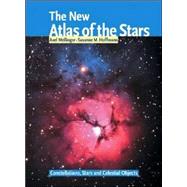
Axel Mellinger is one of the world's foremost astrophotographers.
Susanne M. Hoffman is a writer and lecturer specializing in astronomy.
| Foreword | |
| Stars and Constellations | |
| Historical Star Charts | |
| The Movement of the Heavens | |
| Star Trails | |
| Key Charts | |
| Our Milky Way | |
| The Northern Hemisphere | |
| Ursa Minor, Polaris and Camelopardalis | |
| Andromeda Galaxy | |
| Andromeda, Cassiopeia and Cepheus | |
| Cassiopeia, Perseus and Triangulum | |
| Auriga, Gemini and Taurus | |
| Ursa Major, Lynx and Leo Minor | |
| Ursa Major and Canes Venatici | |
| Bootes and Corna Borealis | |
| Draco, Hercules and Lyra | |
| Cepheus, Cygnus and Vulpecula | |
| California Nebula | |
| The Equatorial Region | |
| Pegasus, Pisces and Aquarius | |
| Pisces, Cetus and Aries | |
| Taurus and Eridanus | |
| Orion, Lepus and Monceros | |
| Cancer and Canis Minor | |
| Leo, Sextand and Hydra | |
| Coma Berenices, Corvus and Crater | |
| Virgo and Its Surroundings | |
| Cornoa Borealis, Serpens and Libra | |
| Serpens, Ophiuchus and Scutum | |
| Sagitta, Aquila and Delphinus | |
| Delphinus, Aquarius and Equuleus | |
| The Southern Cross | |
| The Southern Hemisphere | |
| Sculptor, Phoenix and Tucana | |
| Eridanus, Horologium and Fornax | |
| Canis Major, Colmba and Dorado | |
| The Three Sections of the Heavenly Ship Argo | |
| Around the Southern Cross | |
| Centaurus, Lupus and Norma | |
| Sagittarius, Telescopium and Ara | |
| Capricornus, Piscis Austrinus and Indus | |
| Eta Carinae Nebula | |
| Around the South Celesital Pole | |
| Large Magellanic Cloud | |
| Appendices | |
| Astrophotography | |
| From the Starry Sky to the Computer | |
| Constellations and Deep-Sky Objects | |
| Glossary | |
| Further Information | |
| Table of Contents provided by Publisher. All Rights Reserved. |
The New copy of this book will include any supplemental materials advertised. Please check the title of the book to determine if it should include any access cards, study guides, lab manuals, CDs, etc.
The Used, Rental and eBook copies of this book are not guaranteed to include any supplemental materials. Typically, only the book itself is included. This is true even if the title states it includes any access cards, study guides, lab manuals, CDs, etc.